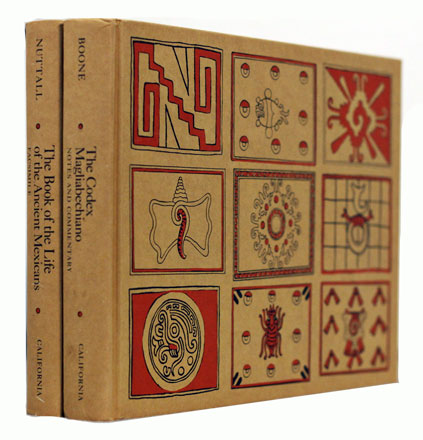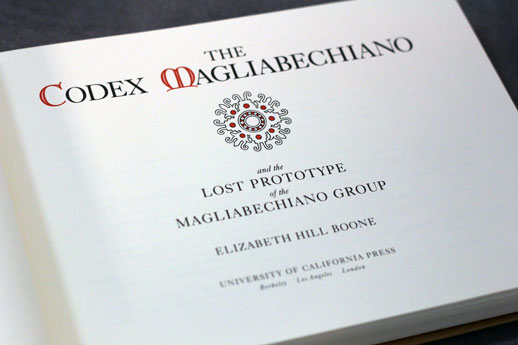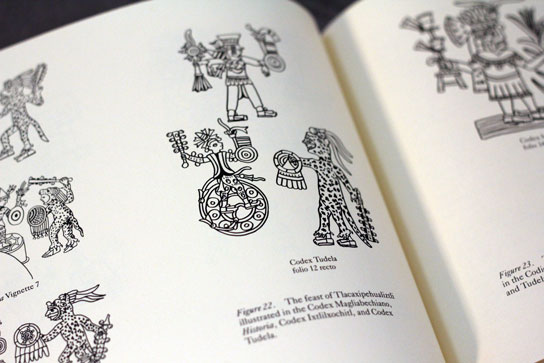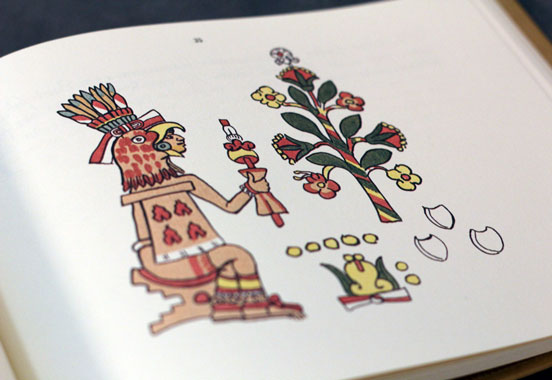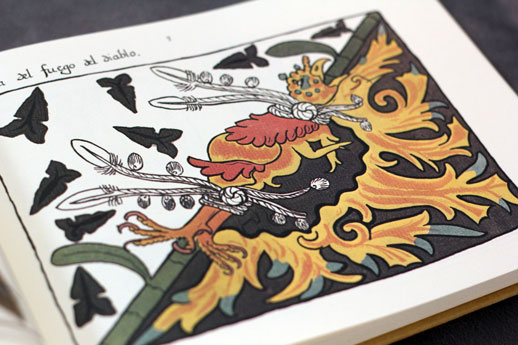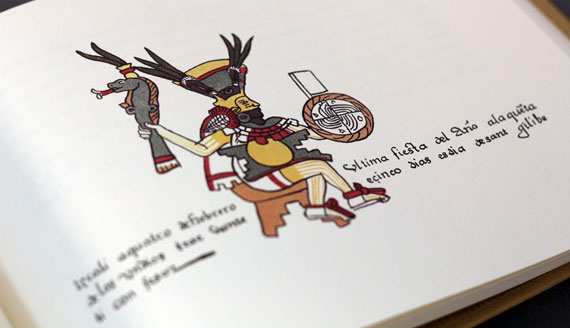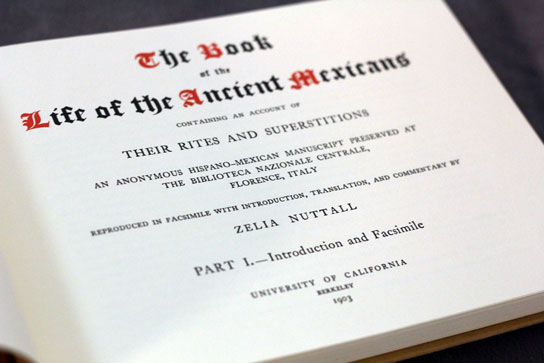Title: Volume 1: Facsimile reproduction of ‘The Book of the Life of the Ancient Mexicans’. Volume 2: The Codex Magliabechiano: Notes and Commentary
Author: Unknown. Boone, Elizabeth Hill; Nuttall, Zelia (trans & commentary)
Publisher: University of California Press, 1983.
Condition: Hardcover, paper boards with slipcase. In very good condition, with minor shelf wear.
About the book:
The Codex Magliabechiano is a pictorial Aztec codex created during the mid-16th century, in the early Spanish colonial period. It is representative of a set of codices known collectively as the Magliabechiano Group. Others in the group include the Codex Tudela and the Codex Ixtlilxochitl.
The Codex Magliabechiano is primarily a religious document. Its 92 pages are almost a glossary of cosmological and religious elements. They depict in turn the 20 day-names of the tonalpohualli the 18 monthly feasts, and the 52-year cycle. They also show various deities, indigenous religious rites, costumes, and cosmological beliefs.
The Codex Magliabechiano is based on an earlier unknown codex, which is assumed to have been the prototype for the Magliabechiano Group. It is named after Antonio Magliabechi, a 17th-century Italian manuscript collector, and is presently held in the Biblioteca Nazionale Centrale, Florence, Italy.
Sometime between 1529 and 1553 a mendicant friar proselytizing among the Indians in Central Mexico requested a native artist (or perhaps several) to paint for him images showing the native deities, calendars, and customs. When the artist had finished, the friar wrote his descriptions of these rituals on the pages opposite their respective depictions. The result is a near encyclopedia of the Aztec religion.
The manuscript eventually made its way to Europe, as did so many of the manuscripts created during the conquest. Scholars know that the book was in the collection of Antonio da Marco Magliabechi – for whom it is named – upon his death in 1714, but its earlier provenance is unclear. After Magliabechi’s death, his collection was bequeathed to the city of Florence and later helped form the Biblioteca Nazionale Centrale, where it now resides.
Within the pages is depicted human sacrifice, as well as patterns of coats worn during various ceremonies. Also included is a depiction of the 20 symbols of days and a calendar cycle of 52 years. Included in this are a series of monthly celebrations. In particular pulque (an alcoholic drink from the maguey plant), the dead and mountain and rain Gods are all elaborately illustrated; as well as ritual celebrations of the dead and healing of the sick.

